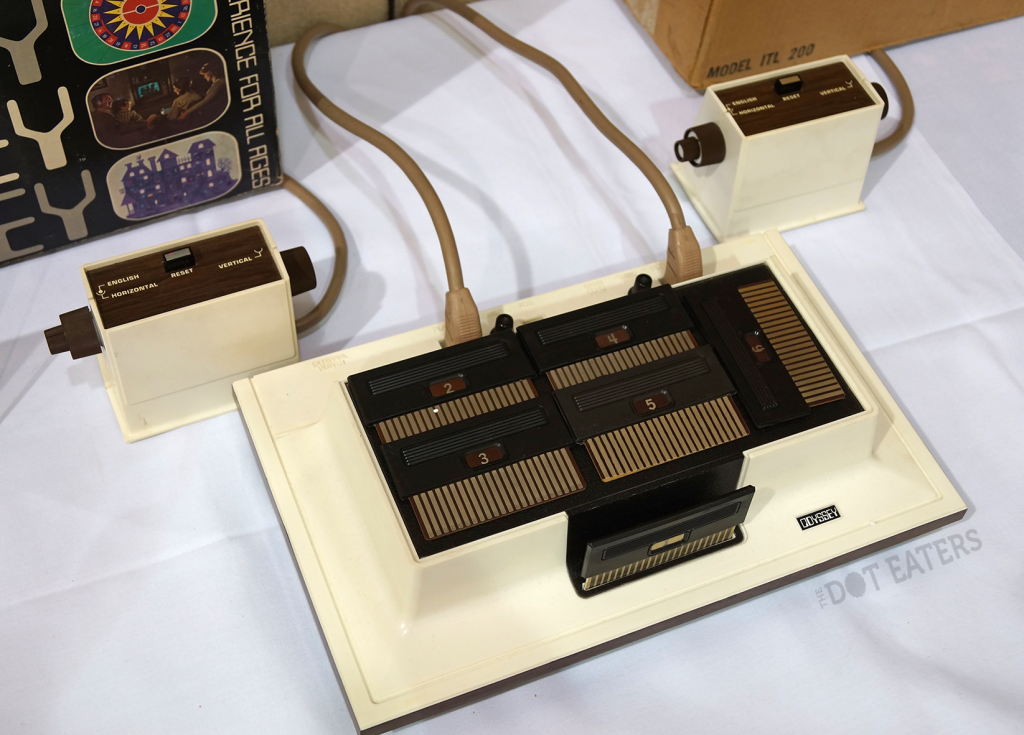Today, Nov. 15, 2013, the latest in modern console gaming drops. The Playstation 4 features 8G of RAM, a 1.84 teraflop graphics chip, a 500G hard drive and an eight core CPU running somewhere in the neighbourhood of 1.6 GHz per core.
Now, follow me back through the murky mists of time. Here, just put your hand on my arm, I’ll lead you through. Watch out, don’t trip over that original Playstation, it’s grey and hard to see in this fog. Look, there’s Panasonic’s 3DO Real console, that monster is hard to miss. Be careful not to trip over those joystick cords for the Atari VCS. Wait… ah, here we are.
The Odyssey, released by Magnavox in 1972. Developed at military contractor Sanders Associates by Ralph Baer, it was the very first home video game console. The Odyssey didn’t have gigabytes of RAM, nor a graphics processor, nor a multi-core processing unit. It didn’t have ANY CPU or any of that other stuff; inside it was a board made up of discreet components like capacitors, resistors and transistors. Its black and white graphics were so rudimentary that packaged with the console were mylar overlays you would slip onto your TV screen to simulate various backgrounds. You then played virtual Ping Pong, or shot at dots with an available light gun accessory. The Odyssey didn’t transport you onto a fully-rigged sailing ship as you plied the green waters of the Caribbean, nor did it place you on a frantic battlefield full of soaring jet fighters or rumbling tanks.
The Odyssey did, however, take the first tentative step towards those later worlds. It was the starting point, with the PS4 and Microsoft’s Xbox One as the current destination. We will keep moving forward, but on these occasions, it’s good to also take a look back at where we’ve been.
For more information on the Odyssey, consult your local Dot Eaters article.
















